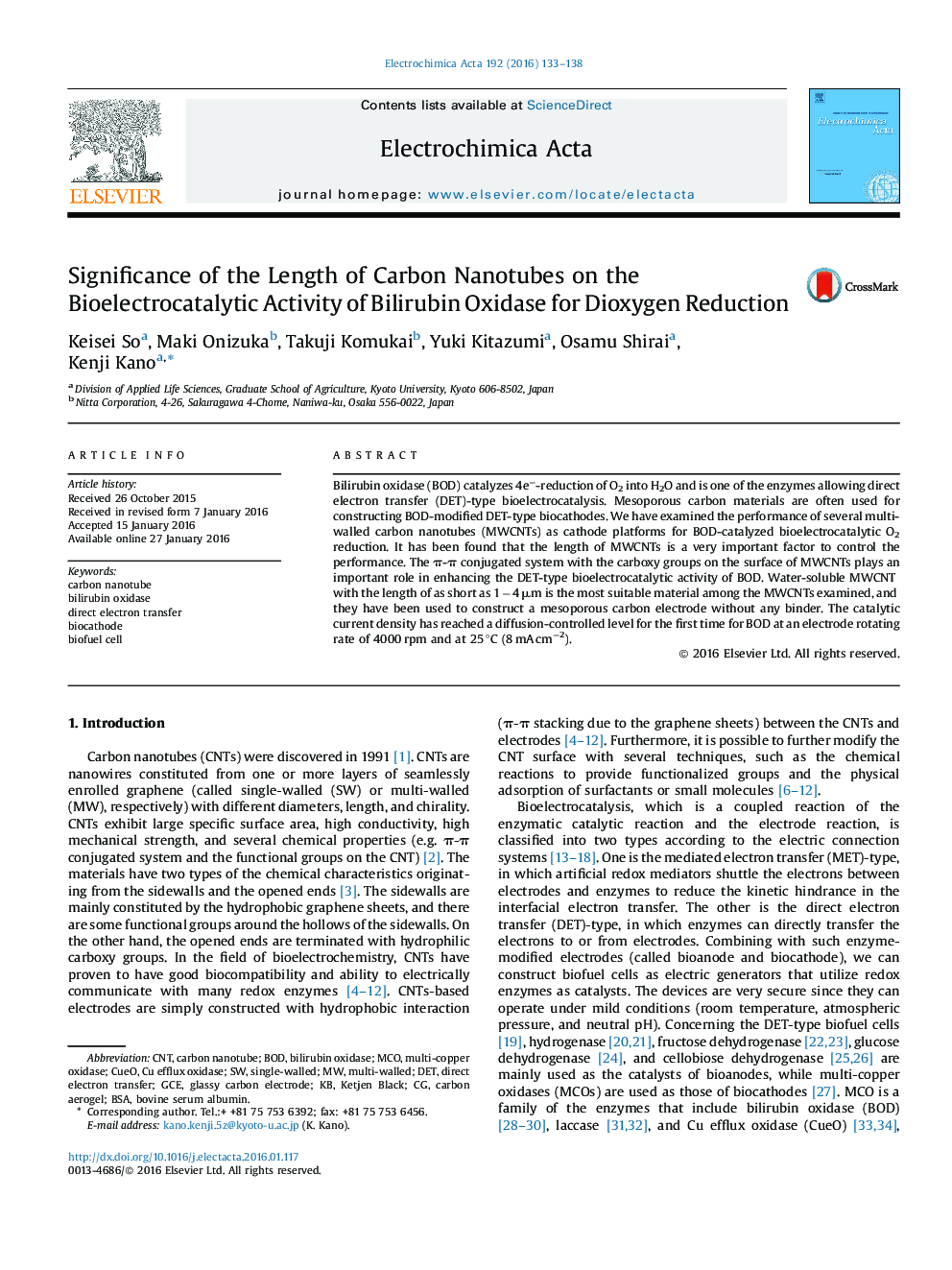| Article ID | Journal | Published Year | Pages | File Type |
|---|---|---|---|---|
| 6608541 | Electrochimica Acta | 2016 | 6 Pages |
Abstract
Bilirubin oxidase (BOD) catalyzes 4eâ-reduction of O2 into H2O and is one of the enzymes allowing direct electron transfer (DET)-type bioelectrocatalysis. Mesoporous carbon materials are often used for constructing BOD-modified DET-type biocathodes. We have examined the performance of several multi-walled carbon nanotubes (MWCNTs) as cathode platforms for BOD-catalyzed bioelectrocatalytic O2 reduction. It has been found that the length of MWCNTs is a very important factor to control the performance. The Ï-Ï conjugated system with the carboxy groups on the surface of MWCNTs plays an important role in enhancing the DET-type bioelectrocatalytic activity of BOD. Water-soluble MWCNT with the length of as short as 1 â 4 μm is the most suitable material among the MWCNTs examined, and they have been used to construct a mesoporous carbon electrode without any binder. The catalytic current density has reached a diffusion-controlled level for the first time for BOD at an electrode rotating rate of 4000 rpm and at 25 °C (8 mA cmâ2).
Related Topics
Physical Sciences and Engineering
Chemical Engineering
Chemical Engineering (General)
Authors
Keisei So, Maki Onizuka, Takuji Komukai, Yuki Kitazumi, Osamu Shirai, Kenji Kano,
